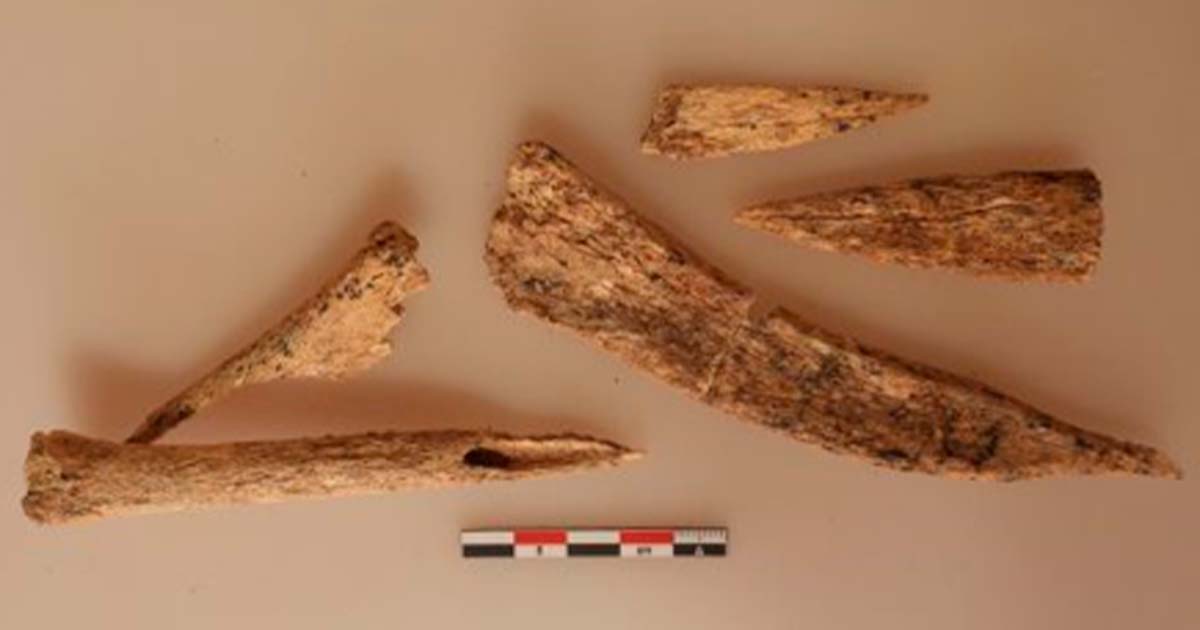New Evidence Suggests Masai Practice of Bleeding Cows May Go Back 7,000 Years
Excavations in a 7,000-year-old cemetery in Sudan have uncovered bone tools that were probably used to bleed cows. This may be the earliest evidence of a practice that is still prevalent among the Masai cattle herders of Africa.
The excavations were part of a study being conducted in the Letti Basin area of the Middle Nile Valley by researchers from the Institute of Archaeology and Ethnology of the Polish Academy of Sciences. According to the Nauka W Polsce, the study aims to identify the first cattle-breeding communities in Africa and whether domestication of cattle occurred indigenously or if the herds were brought in from the Middle East.
- From Hunters to Settlers: How the Neolithic Revolution Changed the World
- Saudi Arabian Dog Remains Are A Shocking Find
Bone Blades Similar to Masai Implements for Bleeding Cows Found in Burial Pit
The prehistoric cemetery was accidentally discovered when the wheels of heavy road-laying equipment sank into the burial pits and threw up human bone remnants, containers and decorations to the surface in the process of lifting themselves out, reported LBV.
Excavations revealed 7,000-year-old burials, and with such ancient burials being hard to come by, the site represented a rare opportunity for archaeologists and anthropologists.

The collection of bone tools in situ, thought to be used for bleeding cattle found in the cemetery in Sudan. (M.Osypinska/PAP)
One of the burials was that of an elderly man whose remains were covered with fragments of animal skin dyed in ocher, a red mineral dye used in Africa since Paleolithic times, in cave paintings, for one. A natural clay earth pigment, ocher is a mix of ferric oxide, clay and sand and has a ritual significance as well, as its presence in the grave shows.
Apart from the human remains, the burial pit also contained a small bowl with traces of ocher and five bone blades of varying sizes likely fashioned from cattle bone. Shaped like a funnel or channel, they were clearly sharpened.
- Did Ice Age Extinctions Force Us to Invent Civilization?
- The Northern Mysteries Current: Futhark and Mystery Schools of the Viking Age
The shape has great significance as Dr Piotr Osypiński, who led the excavations, explained. He is quoted in the Heritage Daily as saying:
“Given the characteristic shape of the blades, they could have been used to bleed cows, similar to modern African shepherds, such as the Maasai. Without any harm to the animals, cows’ blood is drunk on special occasions, usually mixed with milk. It would be the oldest known record of this type of practice.”
A 7,000-year-old Surgical Procedure Gone Wrong?
Another burial that specifically caught the attention of the research team was that of a young man in a small oval cavity. He had been placed in a fetal position on his right side and was once again covered with ocher-dyed animal skin. The grave was equipped with a small bone palette to crush the pigment as well as two bone blades.
But what was of particular interest to the researchers was the discovery of a round hole in his head.
It was a precisely cut circle measuring about 5 centimeters (almost 2 inches) in diameter. The scientists found it difficult to imagine how such a complicated and dangerous surgical procedure had been executed using primitive stone and bone tools. However, since it showed no advanced signs of healing, it had probably not been a success and had resulted in his death. It is also possible it was part of a ritualistic procedure and not intended as a treatment for a disease, but both explanations are speculation.

One burial at the burials at the Paleolithic cemetery in northern Sudan. (M.Osypinska/PAP)
Apart from human burials, the grave site also contained clusters of cattle bones. The researchers surmise that the people who buried their dead in the cemetery also probably used it to bury cattle. These people probably belonged to the earliest pastoral cultures of Africa and, some 7,000 years ago, they moved across the African Sahel with large herds of cattle.
Outlining the significance of studying these communities, Dr Osypiński said:
“The Neolithic pastoral communities of sub-Saharan Africa are extremely important to the history of this continent. They were at the genesis of the formation of ancient civilizations – including the Ancient Egyptians. Due to their mobile lifestyle and the thousands of years that separate us from them, we still know very little about them”.
Top image: A set of bone tools thought to have been used for bleeding cows. Source: M.Osypinska/PAP
By Sahir Pandey
References
Carvajal, G. 2023. Livestock bleeding tools found in 7,000-year-old cemetery in Sudan. Available at: https://www.labrujulaverde.com/2023/03/encuentran-herramientas-para-sangrar-ganado-en-un-cementerio-de-hace-7-000-anos-en-sudan.
Heritage Daily. 2023. Tools for bleeding cows uncovered in 7,000-year-old cemetery. Available at: https://www.heritagedaily.com/2023/03/tools-for-bleeding-cows-uncovered-in-7000-year-old-cemetery/146643.


















Comments
Cruel, inhumane, maccabre practice. I’d bet the true ancients NEVER did it, and probably loved their big, docile milk/cheese producing-animals, who kept their grain fields fertilized from year to year.
Only would one-year-old bulls need to be put down, but ceremoniously, with the utmost of respect to their creation, and unbroken circle. But this would all have been pre-Ice Age, when the region was lush and watery, and Atlantis was that concentric-ringed island in the inland sea (now dry valley of the Richat Structure) just as Plato described it, circa 115k BC, adding the zero back to his timeline.
Nobody gets paid to tell the truth.